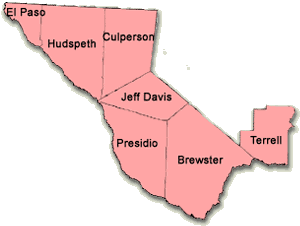|
| Home | | About Us | | Water Planning | |
Groundwater | |
Conservation | |
Environmental Flows | |
Drought Mgmt. | |
Resources | |
Search | | ||
|
Region E - Far West Texas
2001 Regional Water Plan Review  Basic Plan Facts
What's at Issue?
This region is facing extreme pressure on their limited water resources. The major aquifers - the Hueco Bolson and the Mesilla Bolson - are shared by Texas, New Mexico, and Mexico and provide for most municipal and industrial water needs. The freshwater reserves of these groundwater supplies are diminishing rapidly. As the groundwater resources in the region have not been managed sustainably, future generations may not have reasonable access to groundwater.In addition, the region's main surface water supply, the Rio Grande, cannot be relied upon to support demands during times of drought. In all, without additional projects, El Paso will be unable to meet all customers needs during drought of record by 2030, and a total of eight cities in Region E will have unmet needs by 2050. Action Items
Here are some of the items the Region E Planning Group must address.For conservation and drought management, the plan needs to...
To secure the protection of flows for fish and wildlife, the plan needs to...
To ensure that only the most economically sound water supply strategies are implemented, the plan needs to...
Additional Resources
Analysis
The National Wildlife Federation analyzed the initially prepared plan using their Principles for an Environmentally Sound Regional Water Plan. Please contact us for more information about this analysis.
|
||||||||||||


 Region E
Region E